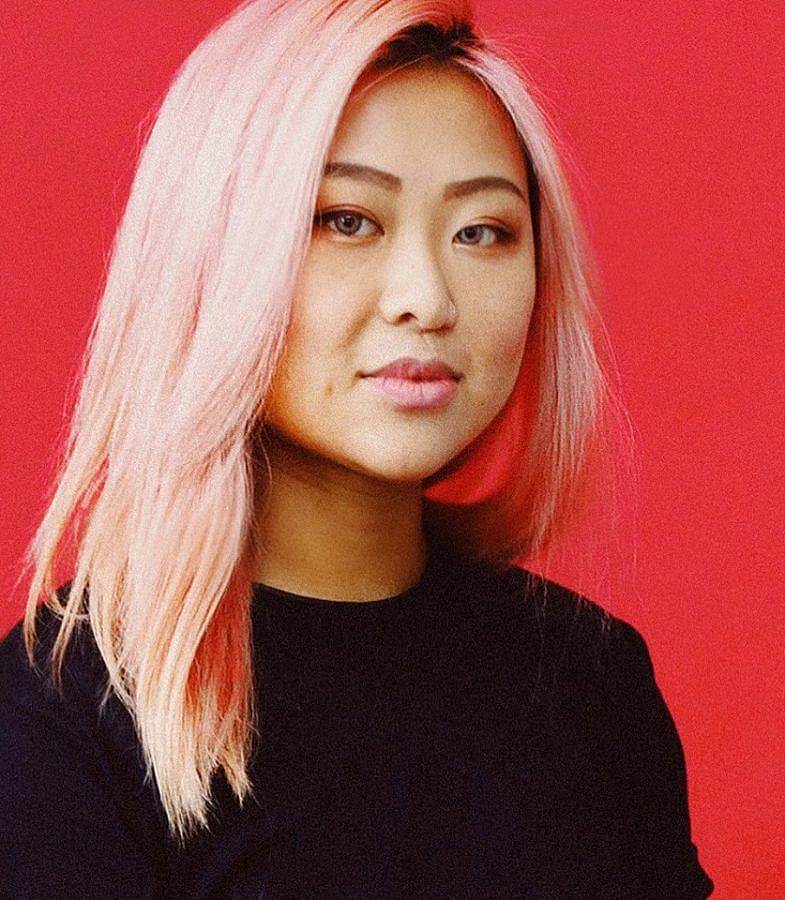Tell us a little bit about yourself and what you do.
My name is Eileen Tjan. I was born in Singapore and raised in Michigan where I attended University of Michigan. I’m a graphic designer and art director, my previous work has been recognized by Type Director’s Club, Communication Arts, the Addy’s and more. I’ve spoken at Brand New, Portland’s Design Week, Chicago’s Design Week, taught workshops in Mexico at UDEM and at the University of Austin at Texas. I also frequently guest lecture or critique at SAIC and Columbia here in town.
I’m currently running my studio practice, OTHER Studio. We’re a team of 3 at the studio. Kate Doyle came to us from Brooklyn via an internship and has recently become OTHER’s full-time junior designer. Corinne Resch, OTHER’s project manager and strategist, most recently joined us from Louisville. We work in Humboldt Park in a studio space with our studio-mates Alex Wallbaum, Justin Duncan, Maggie Famiglietti, and Sara Bang.
On the side, I am the design director for Detroit based publication Grand Circus Magazine. The magazine is a joint venture with my partner Alex Trajkovski who handles much of the editorial content.
How did OTHER Studio start?
OTHER Studio was born out of necessity. I left Chicago in 2012 to pursue a more aggressive design career, and after about 2 years in Washington DC I left my role as art director to come back home… without another job. After coming back to the city, I made the decision to try and create that design role. And if possible, I wanted to open up other opportunities to share work and projects with the local creative community, to support a wider spectrum of work and a different point of view.
When I decided to have a dedicated studio, it also became part of our desire to open up our space for events and get-togethers. We’ve really worked hard to make our own paths here in Chicago and I’m happy to see the studio and many other local creatives pave their own way, it’s helping to define a really unique, and maybe unexpected art and design scene across the city.
What’s your favorite project you’ve ever worked on?
Hard to say. I have enjoyed a lot of my client projects for various reasons.
Spectrum Boutique is a pretty stand out branding project because it was an amazing challenge and exercise to redefine the visual expectations for a sex shop brand. Departing from antiquated aesthetics of the sex/adult industry, we created a personable, inclusive, and established brand inspired by Zoe Ligon’s personality and philosophies.
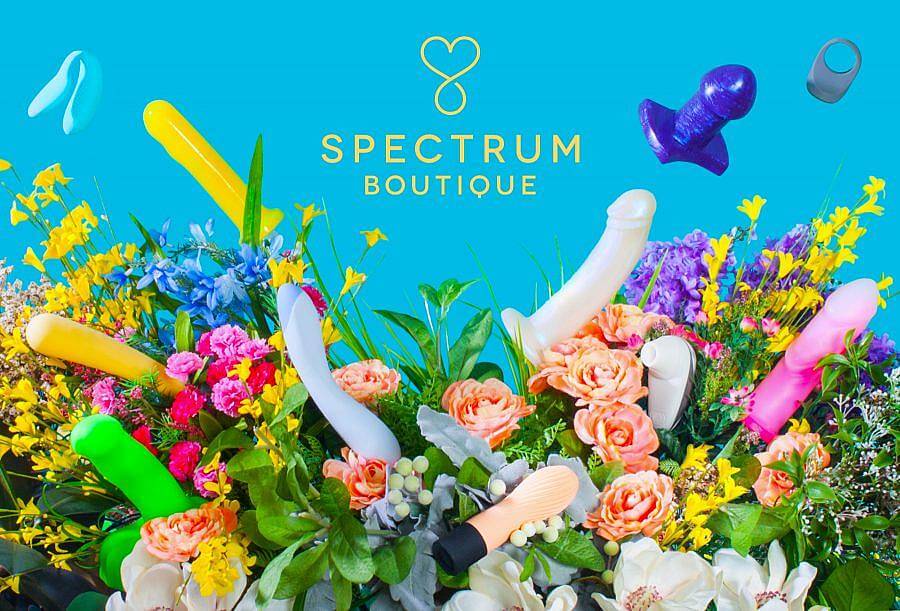
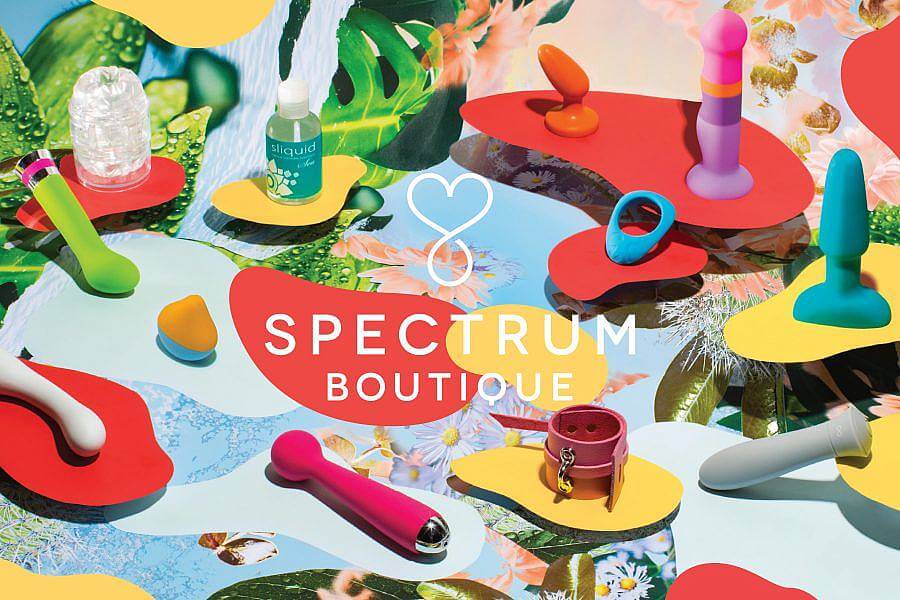
Time Being has been another project that aligns with how we want to see companies and brands thinking. It’s an inclusive tattoo and art studio that promotes a safe space for anyone, LGBTQ+ clientele to comfortably get tattooed. The narrative of the brand is based off the idea that we are all “time beings” and it plays on time in relation to our existence and to the seeming permanence of tattoos.
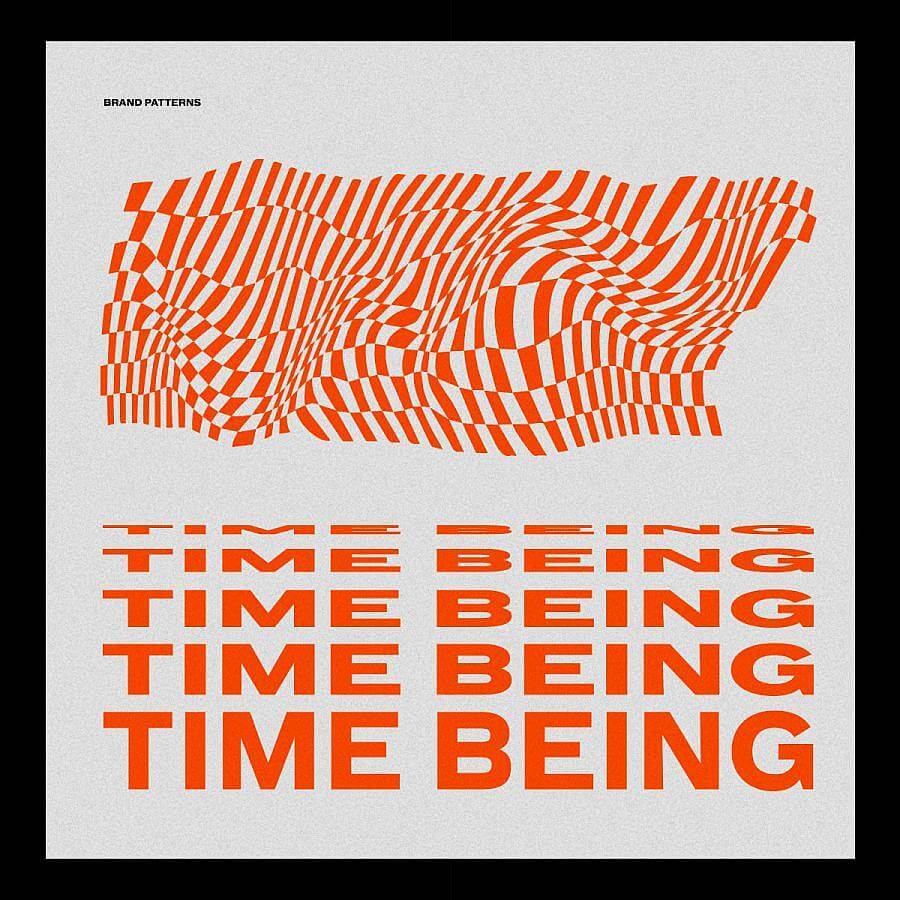
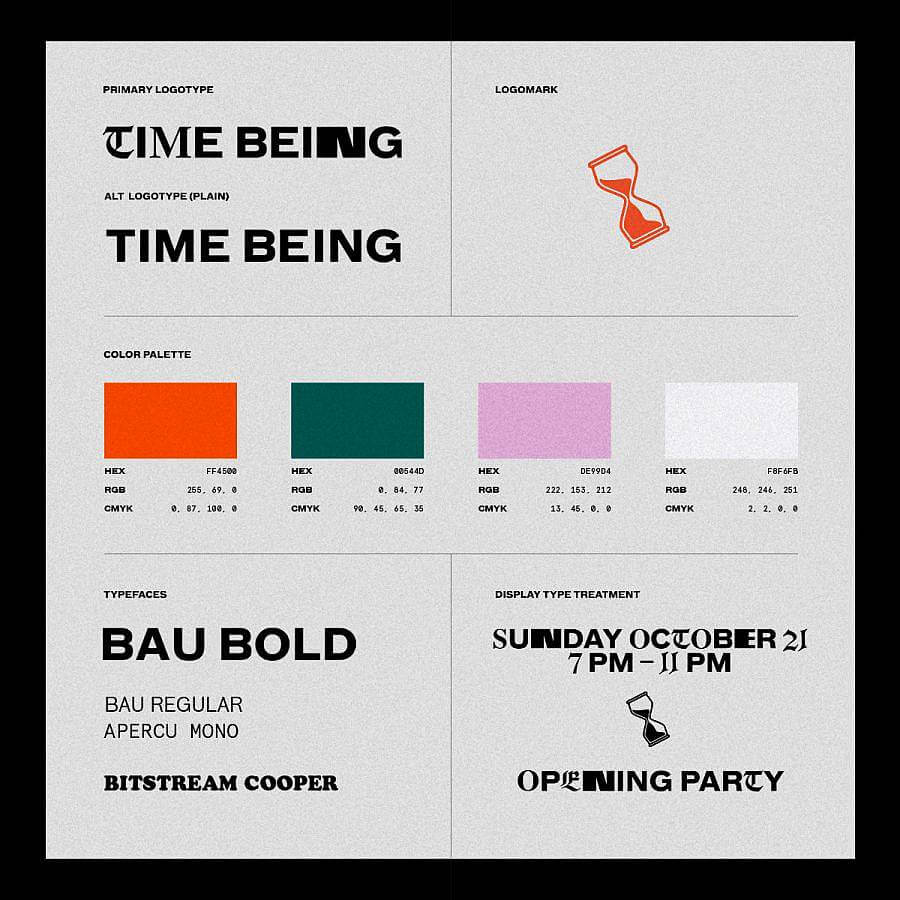
Working with bands like COIN, one of Columbia Record’s rising stars, has been really rewarding as well. It’s a different type of exercise that we enjoy. COIN challenges us to use our tools as designers to create supportive material for COIN’s music and brand extending across social media, merch, and tour collateral.
Personally, I worked on a t-shirt for Lonesome Rose which featured some custom type and honestly, that was one of the most special projects I had last year. I love Land & Sea, and it was awesome to get to do something with them.
How do you decide which projects to work on? Do you tend towards a certain kind of client?
I tend to be most supportive of projects when I believe the client shows investment in the design process, and is truly educated or experienced in their offering. These traits are important to me when I’m fielding projects because an invested client is something I as a small business owner, empathize strongly with. I can ride along with that passion. If they’re supportive of our process, then we have an open space to explore some truly forward-thinking design solutions and the client learns with us. Having a client that is educated or experienced in their field, not only is this an opportunity for us to have continual education through our practice, but it makes for the best creative briefs
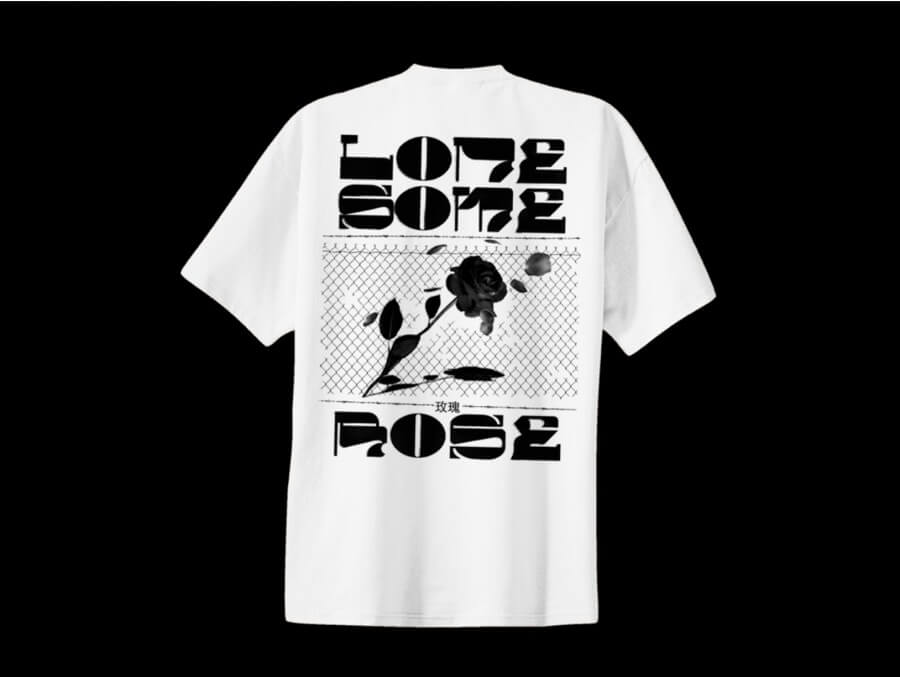
How do you see the internet or social media’s role change the nature of branding? How does it function different from print work?
Every Instagram profile, YouTube channel, Twitter account is unique content coming from an individual. We’re in a new era where everyone has the power to publish. As social media becomes a more recognized space for powerful and influential brands to engage in, I am seeing a flood of accounts and campaigns launching. Expressive and passionate influencers are being celebrated. With little financial risk, these entities are able to stay experimental, nimble, and their personalities turn into brands. Faceless, emotionless, corporate branding is receiving less loyalty from younger audiences as people desire their digital selves to feel connected, closer, and more intimate… these “personal” brands are, for better or for worse, unavoidably alluring. It’s interesting to observe as someone who professionally deals with branding and design solutions.
Print work doesn’t operate on “felt cute might delete later”. The speed of releasing content on the internet, posting on social media, sharing digital projects… is incredible because we know these bits of content and products can evolve, change, but also just disappear. That nimble, hyper experimental expression of those individual social accounts is partially the freedom that comes with the notion of “impermanence”. The ability to put content out there and pull it down asap, or that it’ll fade in our feed in a short period of time creates a response in us… that maybe we don’t need to fully think through everything we do. We don’t need to spend that much time on feeling confident in our choices of work or voice, because we can caption it “might delete later”. Print work is expensive, it takes a long time, it’s complicated yet simple, it is a pure and historic form of communication. But most importantly, if you invest in it and you back the release of it, you cannot “delete” it from the hands of anyone who has consumed or purchased that content. That permanence feels confident to me. So, a brand that releases print work I applaud them for many reasons. It means they are inclusive, receptive to generations and audiences who find familiarity in print but also that they invest in and understand what it means to craft a message and visuals to support it.
What’s your process like? How do you balance a client’s demands while keeping agency over the project?
My design and branding process is, I think, pretty straightforward and conventional.
- Research, understanding the territory I’m designing for.
- Concept, sketching to flush out and visualize ideas. At this stage, I tend to write and collect images versus any computer-based designing.
- Design, when I’m actually turning sketches and written ideas into graphic solutions and branding systems.
For OTHER, the client is always right, but it takes someone with experience to understand the true ask. If a client demands something, instead of reacting defensively and denying the suggestion, I try to read in-between the lines. I’ve learned to unpack why they’re suggesting what they are, and find a solution that satisfies but doesn’t compromise the design work I’ve laid down. Designers can get frustrated with a client’s demands and think their project is running away from them, because demands can feel like a command you just have to execute on. But there’s a lot of paths to get to the same results, find the one that fits for you and the client.
View this post on Instagram
Do you have certain visual or conceptual rules you apply to everything you work on?
The only rule I have with the studio in terms of visuals or concepts, is that if the creator (including myself) cannot articulate why they have chosen this route and communicate the validity of their idea than I will not present it. I’m a firm believer that thoughtful design, even if the work is expressed as a formal exercise, should be able to be spoken about.
I do have a personal practice as well, doing custom typography and illustrations. The rules here are even looser. My expectations are just to make sure I keep doing it. I think it’s easy even if you run your own business, to allow all your creative energy to go into the 9-5. I’ve collaborated with wonderful friends HVNTER GVTHERER and Surachais where my collage or type experiments support their art practices. Dream collaborations.
Who are some of your favorite artists or designers?
I have been following a lot of stylists and their influence on the overall quality of an image, video, or story. Isamaya French is really inspiring me right now. She’s got an energy and point of view that is out of this world.
I’m inspired a lot by my friends and the company I keep. I’m a pretty empathetic creative, so if I create a bond with someone, it’s really likely their passion is fueling my own. Nate James from Detroit is always a source of continual inspiration with his insane output. Ellen Rutt and Patrick Ethen are artists and friends from Detroit who are just killing it by exploring and growing their individual practices.
What are you really into right now?
I just got an iPad, downloaded ProCreate, and I’ve downloaded some low entry 3D programs – so I’ve been enjoying taking some time over the past Holiday break collaging elements I produce from those programs.

How does living and working in Chicago affect your work?
A lot of my clients aren’t in the city. They’re in New York or on the West Coast or Detroit.
Recently, we paired with WDET, Detroit’s NPR affiliate and Grand Circus Magazine to design a 200+ page print publication documenting their Framed By Project, which archived 10 Detroit defining communities.
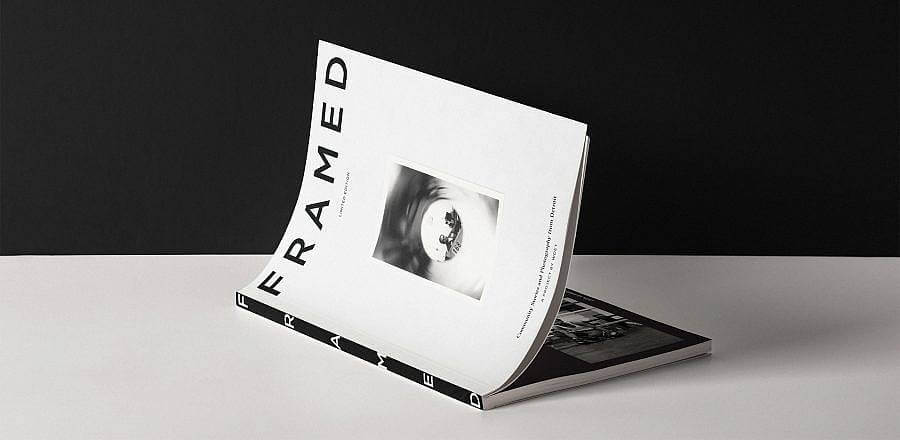
I’m thankful to have the opportunity to live in Chicago and produce my work here. Feels wonderful as well to employ local creatives on projects. At times it can be frustrating to have a lot of ideas and desires for the region to support a wide spectrum of intensely creative people here, but I hope with time the commitment to working in the Midwest will start to shape the asks of our creative community.
What was the last show you saw that stuck out to you?
This past year I went to the Gagosian to view PLAY, showcasing new work by Urs Fischer. A sweet friend and one of the most talented Art Directors I know, Rachel Mason, had suggested it to me and I’m so glad she did. It was an eerie exhibit of “dancing” office chairs choreographed by Madeline Hollander. The exhibit opened into a the gallery’s large main room where office chairs were inhabiting. These chairs would react to you, rush you, running away from each other, swarm, essentially they had seemingly sentient conscious. Merely viewing the show made every visitor a part of this interactive display. It was both delightful and … slightly disconcerting.
What’s your work/studio space like?
It’s a large open loft space in Humboldt Park, one wall is just a row of windows looking out to the park. We have south facing windows, so the studio in the morning is just glowing with light.
We share it, so at times it can get a little crazy in there with props, lights, and desks but we love all the creative energy aka mess.
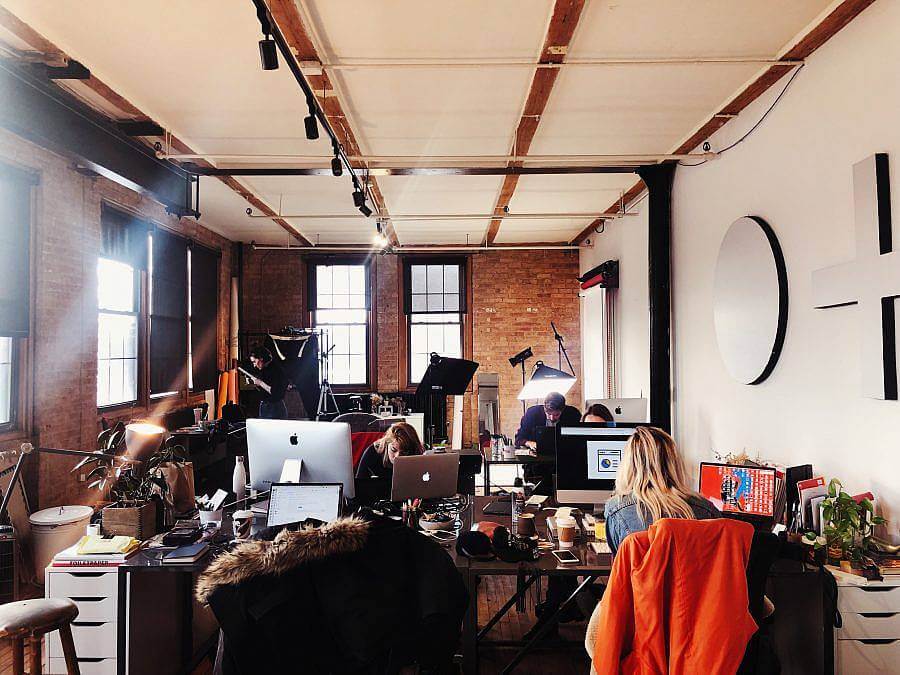
What was the last show you saw that stuck out to you?
This past year I went to the Gagosian to view PLAY, showcasing new work by Urs Fischer. A sweet friend and one of the most talented Art Directors I know, Rachel Mason, has suggested it to me and I’m so glad she did. It was an eerie exhibit of “dancing” office chairs choreographed by Madeline Hollander. The exhibit opened into a the gallery’s large main room where office chairs were inhabiting. These chairs would react to you, rush you, running away from each other, swarm, essentially they had seemingly sentient conscious. Merely viewing the show made every visitor a part of this interactive display. It was both delightful and … slightly disconcerting.
Can you share one of the best or worst reactions you have gotten as a result of your work?
The worst reaction I have ever had was actually a huge learning experience. The idea of introducing new content without consideration of how much impact or influence it had was met with critical eyes, as it should be. The best reaction I’ve ever gotten was a client like WDET telling me how they appreciated how much we cared about their project, pushed the limits and expectations of their brand, and delivered something people were excited about. 🙂
What are you looking forward to in the new year?
Grow offerings, refine skill sets, and leverage experience.
